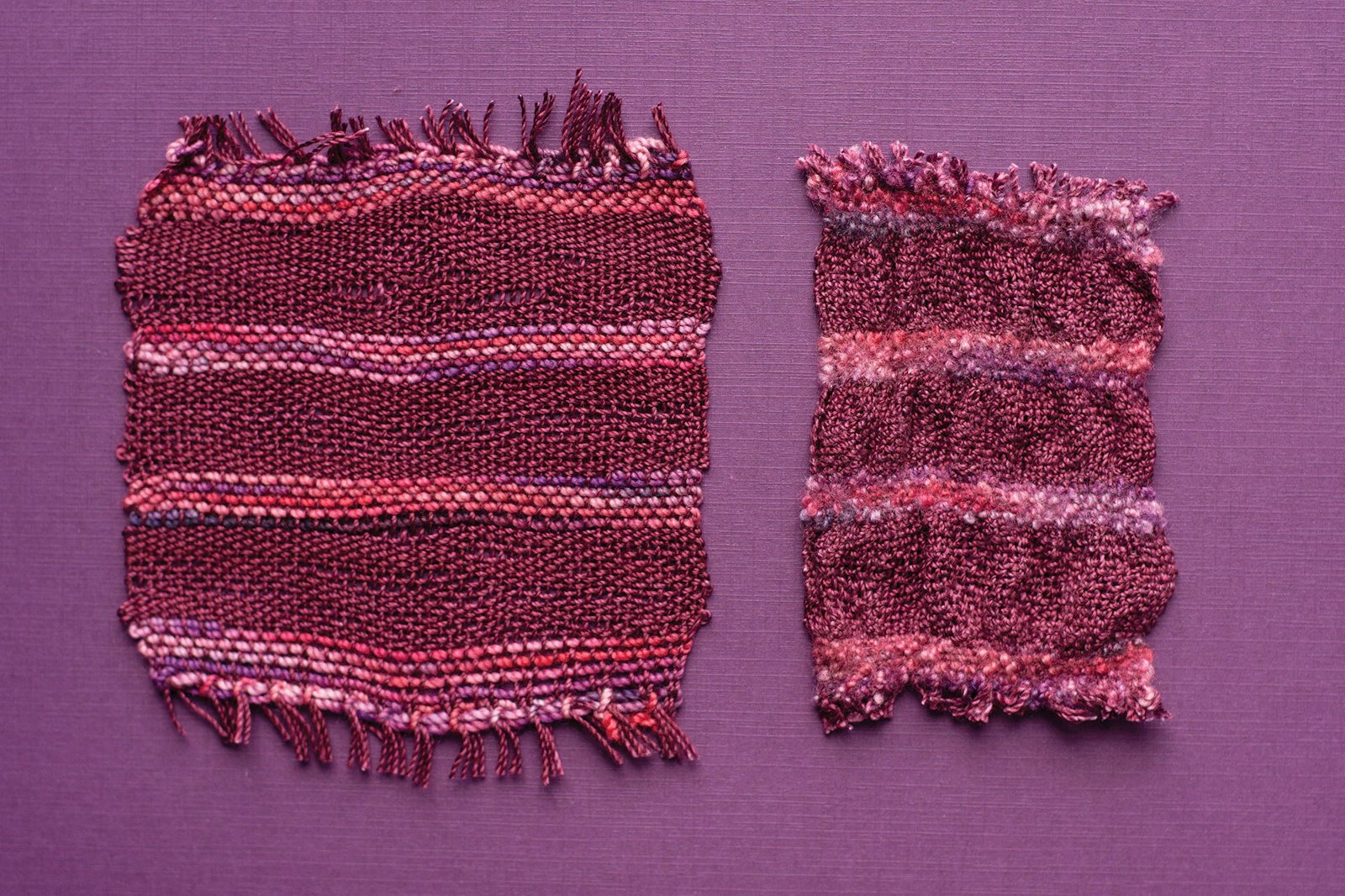Contents
Differential shrinkage, simply put, is the tendency of different fibers to shrink at different rates when they’re wet-finished. Some fibers shrink a lot, some shrink a little, and some don’t shrink at all. When you combine those different fibers in one piece of cloth, it can lead to surprising results. Unplanned differential shrinkage can be delightful or a disaster—fibers can sometimes shrink as much as 40 percent. However, when planned, differential shrinkage can lead to impressive effects and an endless world of possibilities.
In this guide, we’ve gathered our top resources to help you learn the ins and outs of differential shrinkage. As you read, you’ll learn about:
- Which fibers will shrink and which won’t
- Experiments with various combinations of shrinking and nonshrinking yarns
- How to calculate for shrinkage in your projects
- Projects from Handwoven to use your new skills
- Next steps
Every item we’ve selected for this guide is a part of your All Access program and will help you get the most out of your subscription. Let’s dive in!
Fiber Basics
The key to working with differential shrinkage is knowing which fibers will shrink and which won’t.
Wool is the most notable shrinking fiber because it has scales that lock together when exposed to a combination of heat, moisture, and agitation. Merino is best known for behaving this way. But note that not all wools shrink, and not all wools shrink equally—factors such as cuticle type and micron count can affect how much any given yarn or fiber sample will shrink.
Other animal fibers such as alpaca and cashmere shrink less than wool during wet-finishing, and they may require more agitation and time. Angora, on the other hand, is notorious for having a higher shrinkage rate than just about any other fiber.

